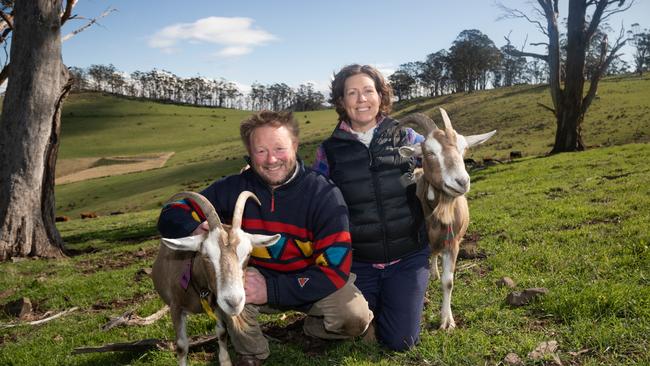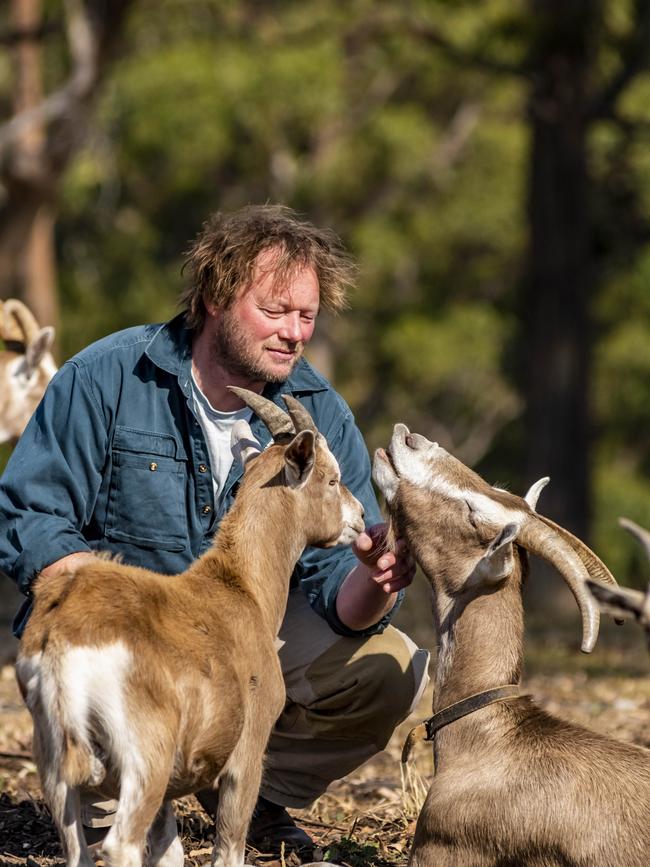Carbon farming: Ways of reducing carbon footprint on your property
Farmers are in the “prime seat” to make carbon-friendly changes to their property that not only benefit themselves but the entire planet. Here’s how one farmer has done it.

Iain Field’s Leap Farm at Marion Bay is officially carbon positive, marking a significant opportunity for farms in the fight against climate change.
The carbon positive rating means the goat and cattle farm absorbs more carbon from the atmosphere than it emits.
And Mr Field says there are things other farmers can do to reduce their carbon footprint too.
“There are little steps that every farmer can take to either reduce their emissions or to sequester some carbon here, there and everywhere,” he said.
“And when you put those little steps together, you can reach these targets.”
Mr Field said while his situation in Tasmania may be different to properties on the mainland, there were still ways of making them more carbon-friendly.
“But everyone can tailor how they’re operating to the conditions of the land, they can use good decision making tools to say, well, the market price is this high at the moment or I don’t have that much rain on the long term forecast,” he said.
Mr Field said he believed there were other farms — particularly in Tasmania — that could also claim carbon-positive status thanks to high rainfall and good soils.
“I truly believe that there’s the bulk of Tasmanian farms are either carbon neutral net zero, or would have the ability to get there without too much effort,” he said.
The time is now for the industry to act on reducing carbon before it’s too late, Mr Field said.
“Farmers and agriculture are probably the only industry at the moment that can clearly demonstrate and act right now to sequester carbon,” he said.

“So farmers are in a prime seat to benefit for doing things that they already do, which benefits humanity at the broadest level, because of the ecosystem services that we provide from our land management practice.”
“We need to be there by 2030. From a science perspective, we cannot do that any longer. We’re one of the world’s greatest emitters. And farmers can help us become clean,” he said.
Carbon Positive Australia chief executive Louise Tarrier backed up the call for action on carbon, saying the benefits of making changes now outweigh the costs.
“There are positive social, economic and environmental outcomes associated with carbon farming which are often referred to as co-benefits,” she said.
“Examples of land or water-based co-benefits from carbon farming projects include increasing biodiversity via protection and regeneration of native vegetation, salinity control and mitigation, improved water quality through restoring riparian vegetation, livestock shelter, and erosion mitigation.”
Mr Field said other motivators for farmers to shift to more environmentally-friendly methods are avoiding tariffs in trade and overall healthier land.
“I see a huge positive. And that’s what I’m really excited about,” he said.
“I see we’re on the verge of another Green Revolution.”
MORE


